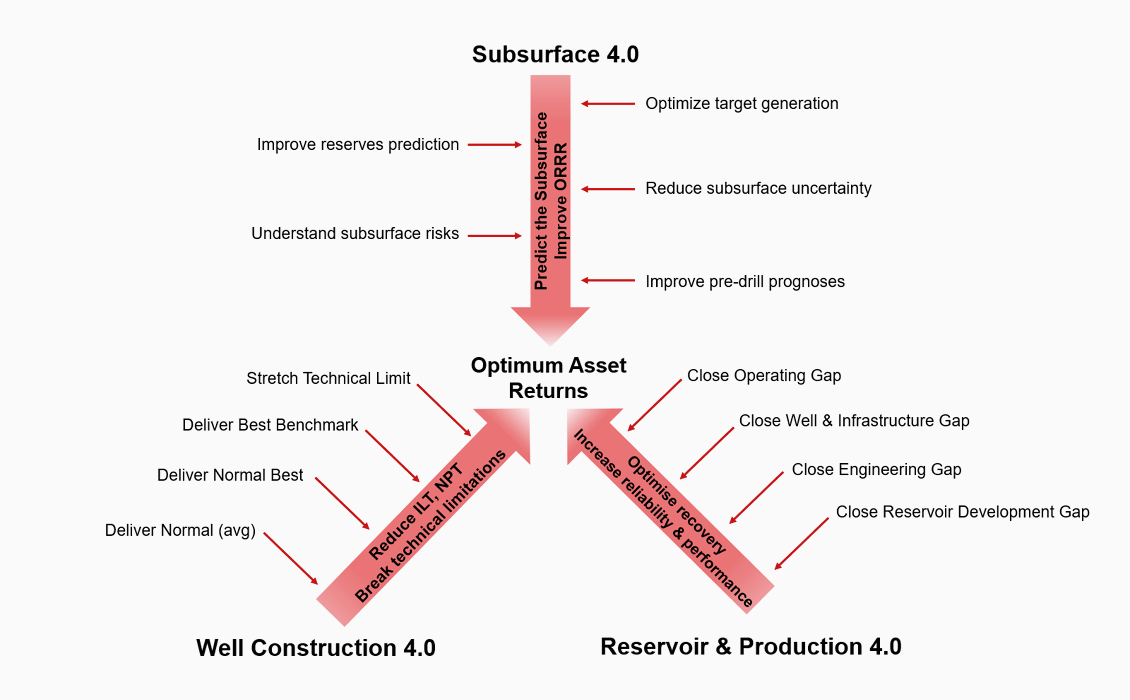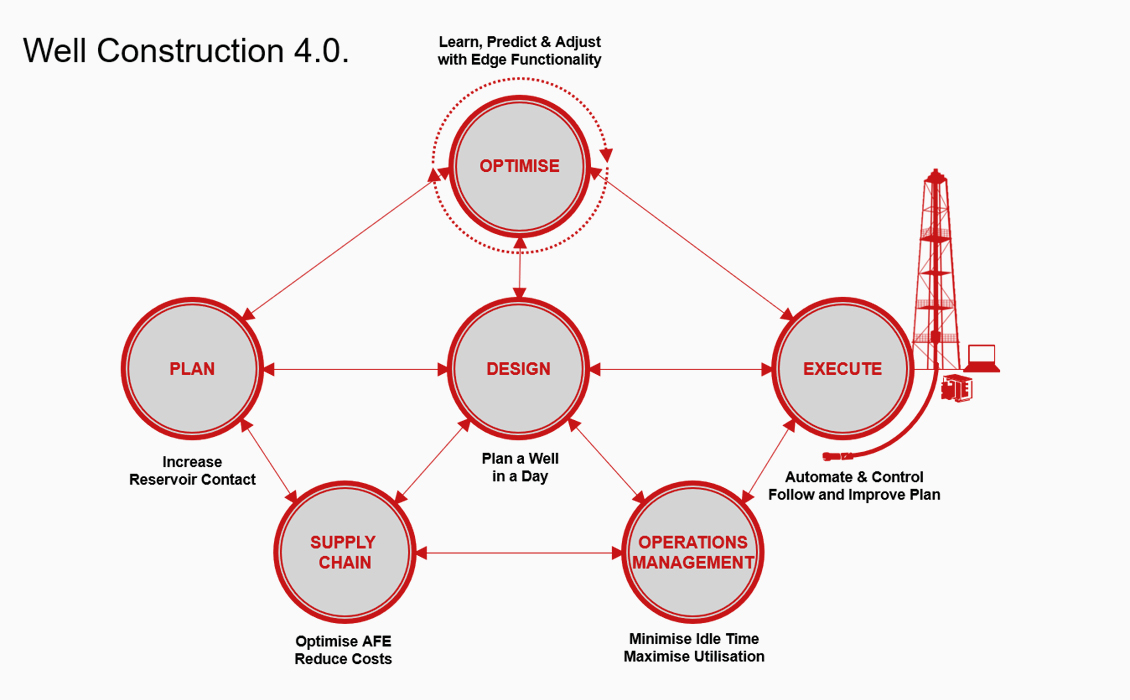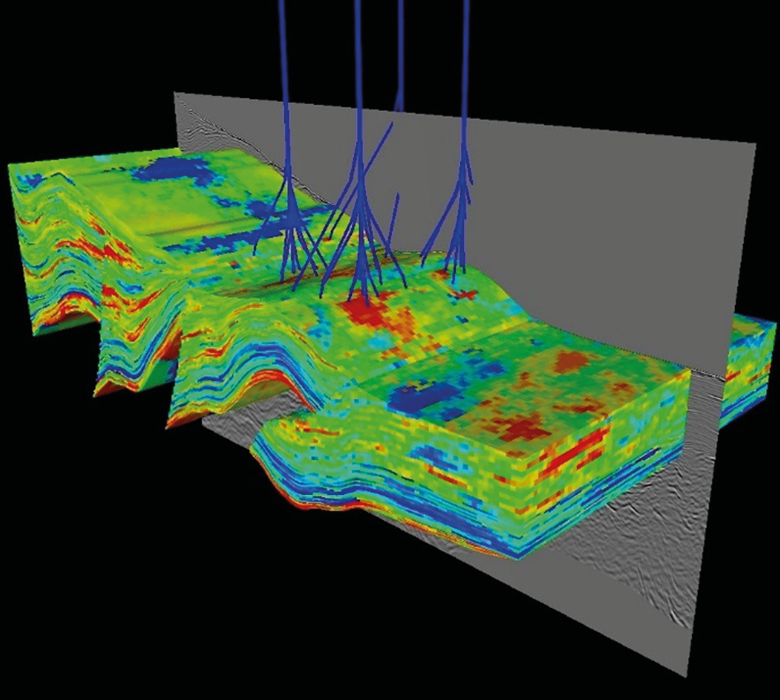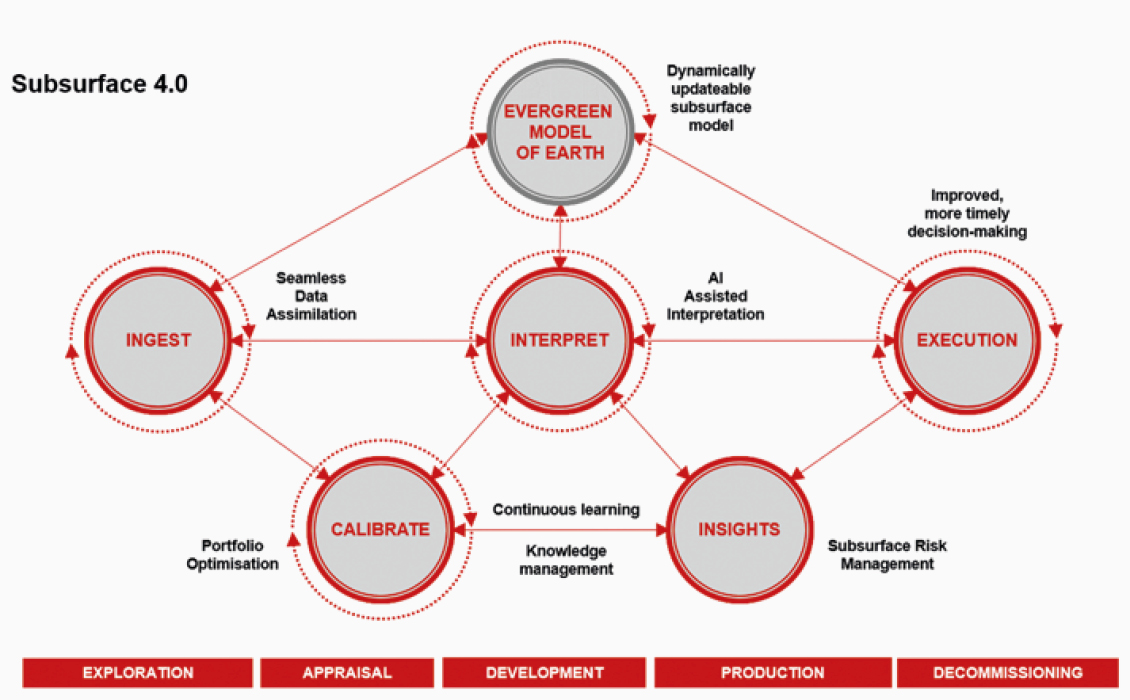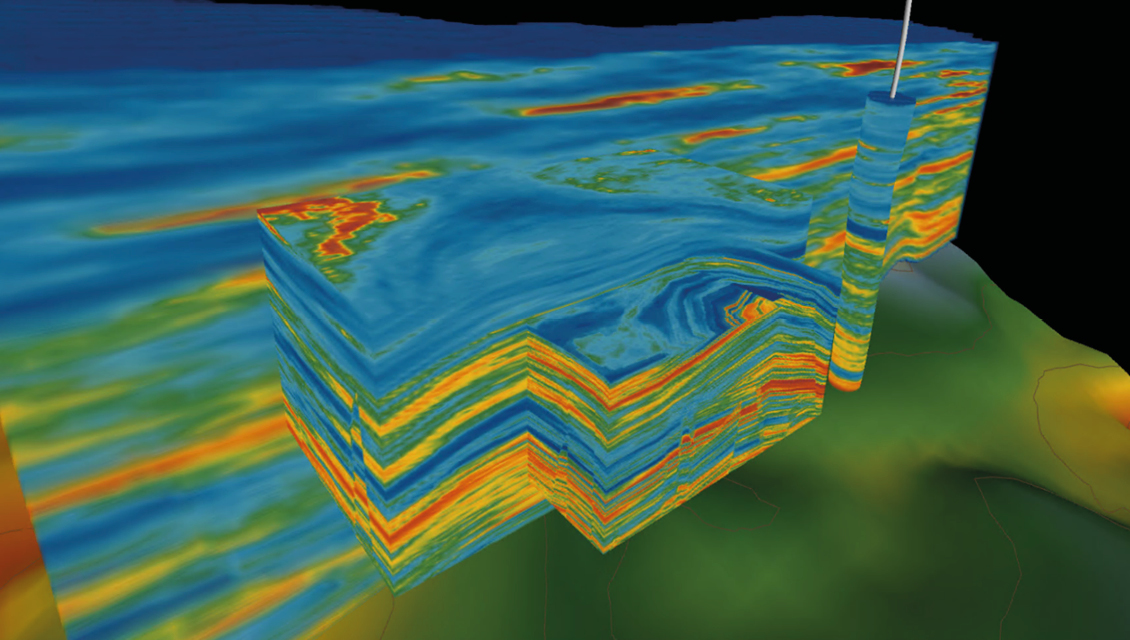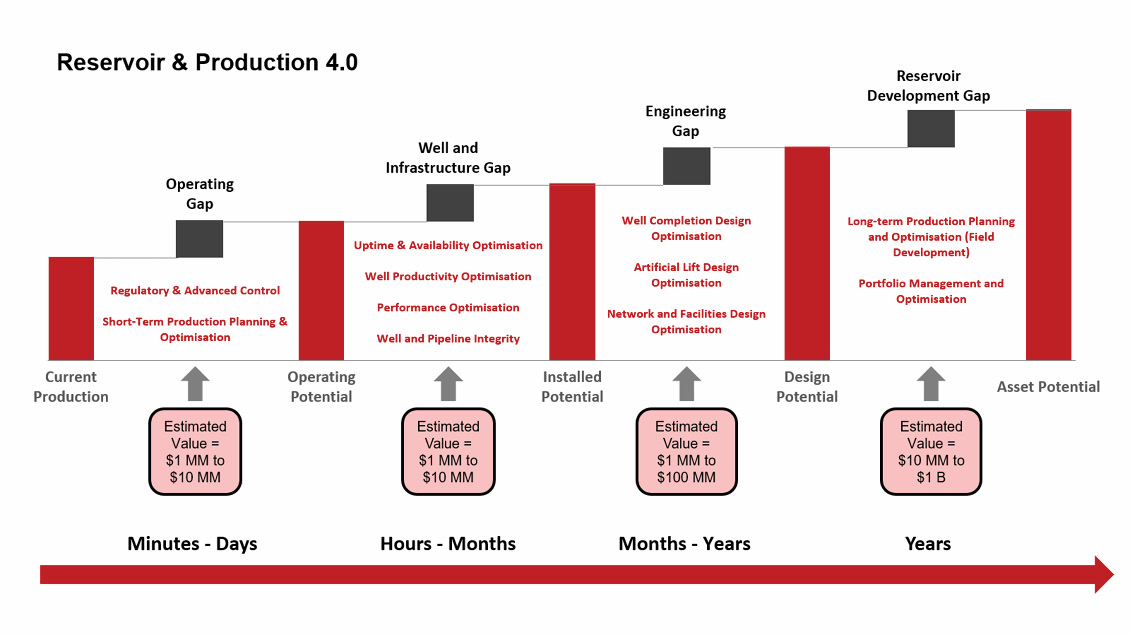The E&P industry is experiencing an unprecedented level of change as strategies shift from growth to returns, business models diversify, and the need for action on sustainability initiatives accelerates. This coincides with an increasingly complex (and rapidly evolving) political, economic, social, technological, legal and environmental backdrop (PESTLE factors). The industry is tasked with navigating this business environment to deliver security of supply, environmental sustainability and affordability – this is where efficiency across-the-board becomes absolutely critical.
Efficiency is not just about saving time: its about maximising return on investment through deployed capital, portfolio optimisation, continuous improvement through removal of waste, and improved quality, consistency, and predictability of business outcomes. Operations also need to be as carbon-efficient as possible, reducing the CO2 footprint and providing the means to offset remaining emissions to achieve net zero targets. As such, efficiency requires system-level optimisation to maximise gains for each E&P asset across its investment lifecycle, and across the portfolio of assets in which it sits.
Unprecedented Change
Efficiency must contemplate the horizon in respect of the PESTLE factors mentioned above – for example, what is the impact of Net Present Value (NPV) erosion because of increased carbon taxation and legislative pressures on Scope 1 and 2 emissions in the future? Can this erosion be mitigated by recycling the asset as a viable carbon sequestration site? Are there adjacencies that can be leveraged, such as the production of lithium from produced formation water to meet supply demands for electrification? How do these things impact the full lifecycle economics?
Since oil, and particularly gas, will remain an important part of the energy mix for the foreseeable future, there is a need to ensure security of supply through continued exploration and production activity, while maximising returns from all investments across the E&P asset lifecycle. From Figure 1, we can see that cashflows start negative as investment in exploration is made and well and seismic commitments are executed early in the lifecycle. Cashflows turn positive after production commences. The NPV is significantly impacted by exploration successes that lead to discoveries that can be economically developed, and by time to first production. If the exploration investment does not lead to an economic discovery, then there is no return. Major efficiencies can be realised by reducing wasted CAPEX investments across the lifecycle, reducing OPEX while concurrently increasing capacity, enhancing returns through technology adoption and leveraging of insights to reduce time to first production and maximise recoverable reserves. Digital solutions are a must-have requirement to enable this step-change (Figure 2). So where are these efficiencies going to come from?
Disruptive Digital Technologies are Changing the Game
The technology landscape is going through a complete revolution. Secure private, public and hybrid cloud environments are being implemented that enable unprecedented levels of integration at the system level through connected and collaborative workflows, marrying front- and back-office tasks with information across the enterprise, including Real-Time operations at the edge. The effective delivery of efficient integrated workflows requires a common platform (see for example the OpenEarth® Community), ensuring consistency and availability of data without the traditional barriers imposed by data transfer between different specialist software applications. Common data standards are also highly desirable to enable fluidity across vendors and between joint venture partners (as exhibited by investments in the Open Subsurface Data Universe™).
The availability and affordability of cloud infrastructure enables solutions for Big Data handling, such that massive workflow efficiencies can be realised, with scalability, consistency and reproducibility. This includes the ability to deploy applications with optimum computational resources for job execution, applications that can take advantage of scalable resource allocation (e.g., microservices), and automation pipelines for classic physics-based techniques integrated with new Machine Learning capabilities to crunch large datasets or derive nonobvious insights.
With progress in IoT (Internet of Things), you can expect better Real-Time asset monitoring, optimised preventative and reactive maintenance, better availability of equipment, optimised production time, implementation of automation and remote management of assets. This Real-Time connectivity enables the E&P Digital Twin, and can positively impact risk and HSE, avoiding potential incidents, malfunctions and rationalising human interaction in operationally hazardous zones.
While adoption of cloud is an enabler, there is a need to embrace the opportunity by reviewing and refining workflow best practices (for example through value stream mapping) and by collaborating more to maximise business value. There is an important component of change management here too – efficiency through automation or assisted interpretation does not mean redundancy for the human taskforce. It means that we can focus more time on the highest value tasks, to create maximum business impact.
Well Construction
Some of the biggest gains to be made sit in the execution of well planning the enterprise create a step-change in time savings and reductions in CAPEX, OPEX, Non-Productive Time and Invisible Lost Time. These are achieved through performance improvements including streamlining the planning process with digital well programmes, drilling close to the limit with digital well operations, integrated production profiling, drilling performance management with Real-Time Services, technical improvements on trip time and rate of penetration and other factors including HSE and well integrity (Figure 3). By driving digital efficiency at the system level, savings on a single well can run to millions of dollars, with months of timesaving in the planning stage, materially impacting the Net Present Value of the asset.
Of course, the optimal execution of the well, and return on investment, even with all these gains is dependent on the well being drilled in the right place, completed with maximum reservoir contact and drilled in the right way to minimise well impairments. This requires a thorough understanding of the subsurface reservoir architecture and characteristics, any past production, and the nature of the overburden.
Subsurface Intelligence
The core petro-technical workflow is well established in subsurface interpretation, integrating well and seismic data to derive an interpretation of structure (Figure 4), stratigraphic relationships, and rock and fluid properties to assist in pre-drill prognosis in exploration, appraisal, development and production activities. Geology, geophysics, petrophysics, geomechanics and other disciplines are core to this effort, but the time involved to produce a portfolio of drillable prospects remains too long to meet current business expectations (often 18–24 months), with low overall probabilities of success in new ventures (wildcats leading to economically viable discoveries are typically <10%). In addition, significant rework and loss of knowledge between different stages of the asset lifecycle can negatively impact NPV. Data are often underutilised, and the wide array of different disciplines often leads to silos in knowledge which inhibit fully integrated workflows and value realisation through reduced uncertainty and better understanding of risk.
At the core, the primary challenge remains the same – how do we interpret and integrate direct and proxy observations of the subsurface and use all the power of the available predictive tools (subsurface insights, sequence stratigraphic principles, physics-based modelling and ML/AI) to drive the best possible fit-for-purpose interpretation of the subsurface to meet strategic and operational goals? How do we also ensure that prior knowledge is effectively leveraged across the asset lifecycle and all scales of modelling? A step-change in the approach to subsurface interpretation from initial data ingestion to the generation of actionable insights is required, one that allows for the development of seamless, dynamic and evergreen subsurface understanding.
One critical element is to ensure that data are interpreted in context – how does the big picture geological framework condition our understanding of reservoir quality and architecture at the smaller scale? Insights from global paleoclimate, eustacy, geodynamics and source-to-sink analysis provide critical information on the behaviour of sediment routing systems over time for subsurface prediction and reduction of uncertainty (e.g., Neftex® Predictions). This context also serves as a reference for Machine Learning models.
Transforming subsurface evaluation requires a paradigm shift in the way data are ingested, interpreted and used to condition subsurface models to optimise operational decision-making (Figure 5).
It is necessary to access and connect structured and unstructured data, consume Real-Time data, adopt open platform and open data standards and leverage the elastic scaling of cloud for heavy-lifting jobs such as seismic processing. Interpretation requires assisted tooling, leveraging Machine Learning and predictive-physics-based tools, and regional petroleum geology understanding to provide the right context. Subsurface models need to be evergreen, dynamically updatable, able to handle complex geology (Figure 4), and be seamlessly scalable from the well bore, to the petroleum system and basin within which the asset sits (Figure 6).
This requires collaborative, multi-user workflows that are optimised for operations geology and commercial decision-making with derived insights used to re-calibrate not only the subsurface understanding, but also the code underlying business process optimisation. This approach to subsurface interpretation helps to reduce uncertainty, and provides a better understanding of subsurface risk, to deliver the optimal technical specification for every well, and to identify solutions required to close operating, well, infrastructure, engineering and reservoir development gaps (Figure 2). Additionally, with today’s computing power, ML and AI supported design and planning can see a reduction time of up to 80%, which drastically improves the NPV by bringing in production months ahead of previously scheduled first oil.
Reservoir and Production
The final piece is ensuring that all assets in the portfolio are delivering maximum value through return on investment, at the least amount of carbon intensity (Advantaged Hydrocarbons). Asset field development, management and production often hides the value pools (Figure 7). A system-level approach is required to identify and prioritise the investments required to close the operational, well, infrastructure, engineering and reservoir development gaps that have a material impact. Digital solutions are required across each of the value pools and their respective components. Capital allocation and OPEX should be optimised to target the gaps across this ecosystem that will drive the most efficiency in terms of returns, requiring a holistic analysis and understanding of the potential gains to make informed investment decisions.
Industrial Revolution 4.0
As the E&P sector continues to evolve, major efficiencies need to be realised by embracing the fourth industrial revolution, – driven by digital enablement, to maximise returns, reduce carbon intensity and ensure security of supply, affordability and long-term environmental sustainability. To do this requires adoption of the digital revolution at the system level, fully coupling subsurface insights with digital well construction to deliver superior reservoir and production performance.



